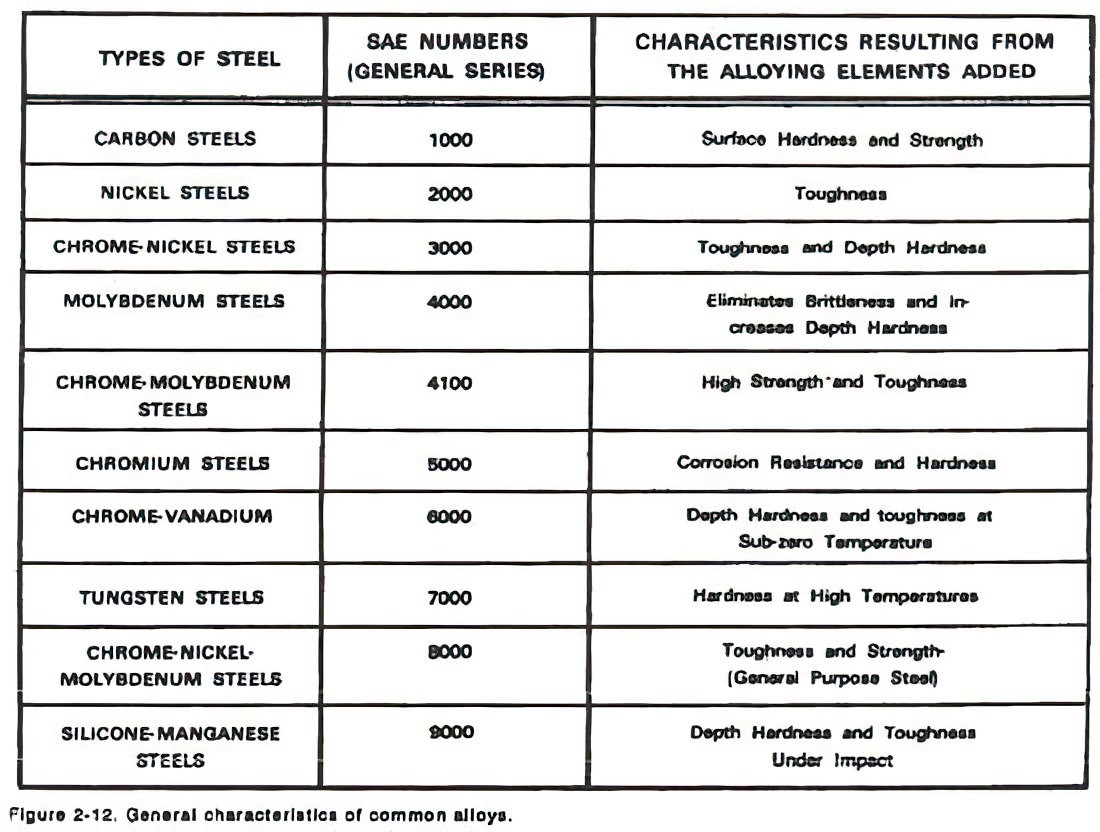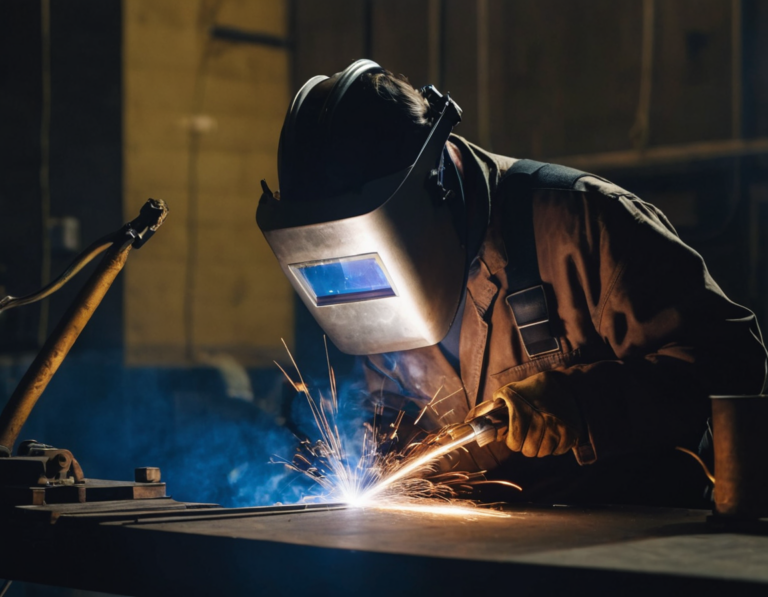The mechanical properties of metals determine their usefulness and the expected service. It refers to the way metals respond to external loads.
This refers to how they change (twisting, compressing, elongating) or break depending on temperature, time, and load. To help identify and specify metals, mechanical properties can also be used.
These are essential in welding, as they ensure that the weld has the same mechanical properties of the base metals being joined.
A weld’s quality will depend on its ability to provide properties that are equal to or greater than those of the metals being welded. You can use the Best TIG Welder for all types of metals.
The mechanical properties of a material are defined by its stress and strain (tension and compression, shear and torsion), elastic and plastic deformations (yield strength and tensile strengths, ductility and toughness, hardness).
Hardness: Resistance to indentation and abrasion.
Toughness and resilience: How metal absorbs energy
Ductility Measurement of plastic deformation without fracture (fracture strains, area reductions, elongation).
Strength: Offset yield. Proof, fracture, yield. Ultimate – measured in stress
Stiffness: Young’s Modulus, or Elastic Modulus
Loading: Tensile (pulling at each end of a bar of metal is tensile strength), compressive shear, torsion Stress and StrainTension and compression, shear, and torsion
Metals’ mechanical properties are almost always expressed in Ksi or MPa. 1000 psi = 1.89 KSI = 6.89 Mpa Continue reading for details on each of the mechanical properties of metals concepts. Modern Materials Testing System. An extensometer is attached to a metal specimen to test the mechanical properties.

The Mechanical Properties of Metals. The Heat Treatment of the Mechanical Condition or Mass of the Metal will determine its value.
Stress and Strain
Metal stress and strain are two of the most important mechanical properties of metals. Load/area is another way to look at the concept. While stress can be measured directly for deformation, it cannot be measured for strain.
Strain: Deformation of the original length/component
Stress: Torsion, shear, and direct
- Examples of direct stress on the metal
- Metal Tensile Strength
- A typical universal testing machine
Tensile strength refers to the material’s resistance to being pulled apart by opposing forces.
It is also known as ultimate strength. This is the maximum strength that metal can develop in a tension test. The tension test can be used to determine the behavior of metals under actual stretch loading.
This test gives the elastic limit, elongation, and yield point as well as yield strength, tensile strengths, and reduction in area. Tensile strength (psi) is the most common value for strength. It is measured in pounds per square inch (psi), or kiloPascals, (kPa).
Tensile strength refers to the force needed to separate a bar of material that is 1.0 inches in diameter. (25.4 mm wide, 1.00 in. (25.4 mm thick.
Shear strength refers to the material’s resistance to being broken by opposing forces that act in a straight direction but not in the same place.
- Metal Shear Strength Diagram
- Strain and Stress Shear
- Diagram
- Shear stress, t = Area
- Also, Shear strain, angle of deformation (radians), g
- Shear modulus, G = 0.25 /g (elastic area).
Fatigue strength
Fatigue strength refers to the maximum load that a material can sustain without breaking down under a lot of load reversals.
A rotating shaft supporting a weight has compressive forces at the bottom and tensile force on its top. The shaft rotates and experiences a cyclic increase in its compressive and tensile strength.
In the design of aircraft wings or other structures that are subject to rapid fluctuating loads, fatigue strength values are used. The microstructure, surface condition, corrosive environments, and cold work can influence fatigue strength.
Compressive Strength
Both concrete and cast iron have a compressive strength that is greater than their tensile strengths. The reverse holds true for most materials.
Elasticity refers to the ability of metal after it has been deformed, stretched, or pulled out of its original dimensions, size, and shape.
The elastic limits are where permanent damage begins. The yield point is the point at which there is definite damage and little or no load increase.
The yield strength is the number of pounds per square inch (kiloPascals), it takes to cause damage or deformation at the yield point.
This is measured using Poisson’s Ratio (the ratio of the lateral to the axial strain), which means that if the metal has been strained in one direction there will be corresponding strains in all directions.
Elastic Deformation
Hooke’s law
S = Ee
Elastic deformation is a term that refers to deformation that’s not permanent. The metal deforms under the load. It returns to its original dimensions and form when the load is removed.
The region that is elastic for the majority of metals is linear. Cast iron is one example of a non-linear metal. Hooke’s law applies to linear elastic behavior, where E is the modulus.
The property of a metal that can be stretched or changed in shape without breaking is called ductility. It also allows the metal to keep the altered shape after it has been lifted.
It refers to the ability of a material such as copper to be pulled or stretched continuously without breaking. The tensile test can determine the degree of ductility in metal by measuring its elongation.
A lack of ductility refers to brittleness, or the inability to show any permanent damage before the metal breaks or cracks (such as cast iron).
Equation of Elongation
Tension strain at fracture expressed in percentage
((final gage length-initial gage length)/ Initial gage Length ) x 100. The percentage of elongation can be used to measure ductility.
Area Reduction
A reduction in the cross-sectional area at fracture of a tensile specimen:
(( initial area-final area) / initial area ) x 100 A measure of ductility is also the percentage reduction in area.
Brittleness
The property that is opposite to plasticity and ductility is called brittleness. Brittle metals are those that cannot be seen as deformed or lack plasticity. The EL% 5% is an approximate measure of how brittle metals are Metals are ductile if their EL% is greater than 8% (approximate).
Microstructural Origins of Metal Plasticity
Plasticity refers to the ability of metal not to corrode or crack extensively. Plasticity is similar in concept to ductility.
It measures the slip, climbs, and slide of atoms within the crystal structure. Dislocations are where climb and slip happen, while the grain boundaries are where slide takes place.
Malleability
Another form of plasticity is malleability. It is the property of a material that can deform under compression and not rupture.
This property allows for the rolling and hammering of metals into thin sheets. High malleability metals include gold, silver, tin, and lead. The extraordinary malleability of gold can be rolled into thin sheets that transmit light.
Reduced Area
This is a measure to determine ductility. It is measured by tensile testing, which compares the original cross-sectional size of a specimen with the cross-sectional size after failure.
Resilience and toughness
Toughness can be described as a combination between high strength and moderate ductility. It refers to the material’s ability to resist breaking and the metal’s ability to resist failure once the damage has started.
A tough metal such as a cold chisel is one that can withstand significant stress, whether it be slowly or abruptly applied. It will not deform before going to failure.
Toughness refers to the material’s ability to resist permanent distortion and to withstand shock or absorb energy. Both the toughness equations and the resilience equations are determined by: Energy per unit volume
Toughness Equation
( J/m3= MPa or N.mm/mm3=?
Resilience Equation
( J/m3 and N.mm/mm3= MPa
Weldability and Machinability
Weldability and machinability refer to the difficulty or ease at which a material can weld or be machined.
Abrasion Resistance
Abrasion resistance refers to resistance to wear by friction.
Impact resistance
Impact strength is a measure of the metal’s resistance to impacts. Metals may be able to withstand static loads but not under impact or dynamic loads. Measurement of the energy absorbed during a fracture determines the impact strength of a material.
Hardness
The ability of a metal’s surface to resist wear and penetration by another metal or material is called hardness. To withstand heavy pounding, you need a combination of hardiness and toughness. Because a metal’s hardness limits its ability to be machined easily, it is harder than other metals.
Elastic Deformation
Hooke’s law is the basis of elastic deformation. This notion states that elastic deformation does not occur indefinitely. When a load is removed from a part, it returns to its original dimensions.
Brinell Harness Test
This test involves a steel ball made of hardened steel being pressed against the metal surface with a known force.
The surface dent’s diameter is measured and the Brinell hardness number (bhn), is calculated using standard tables (see tableau 7-3)
Rockwell Hardness Testing
This test measures the difference in depth at which a test point can be driven into metal with a light load versus a heavy load.
First, apply the light load. Then, move the piece and apply the heavy load. A dial displays the hardness number.
The Rockwell scale letter designations, such as B or C, indicate which type of penetrator was used and how heavy the load was. Always the same light load is used.
Scleroscope Hardness Testing
This test measures hardness by letting the diamond-tipped hammer drop by its own weight from a fixed height. The rebound is then measured on a scale.
It can be used on smooth surfaces, where dents are not desired.






![6 Best Welding Jackets - [Leather Weld Coat] Top Picks 2024 6 Best Welding Jackets – [Leather Weld Coat] Top Picks 2024](https://welding-world-awards.com/wp-content/uploads/2023/11/skrinshot-24-12-2023-234941-jpg.webp)
